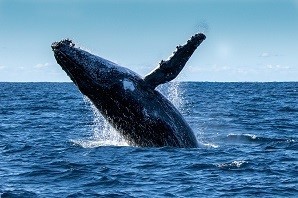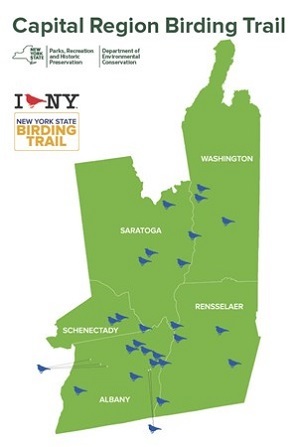Wildlife, Fish, and Marine Life Newsletter
The New York State Department of Environmental Conservation sent this bulletin on 06/06/2022 10:30 AM EDT |
| DEC Delivers - Information to keep you connected and informed from the NYS Department of Environmental Conservation |
| Share or view as a web page || Update preferences or unsubscribe |
Wildlife, Fish & Marine Life Newsletter |
Living with Wildlife
Being able to observe wildlife close to home is a treasured experience for many people, but sometimes wildlife can get too close or even cause property damage. Woodchucks in the garden, squirrels or other critters in the attic, bears rummaging through garbage and tearing down bird feeders, and skunks under the shed are but a few of the problems people may encounter. There are steps you can take to enjoy wildlife from a distance and reduce the chance that conflicts occur:
Photo of raccoon by Tanya Hitt. Watch for Marine Life in New York's Waters
New York's ocean waters are home to various kinds of marine life, including large whales and dolphins! Whales and dolphins are protected under the Marine Mammal Protection Act, and boaters must remain at a distance from marine life for everyone's safety:
If a marine mammal approaches you, remember to idle your engine and not re-engage power until the whale has cleared your path. Attempting to leave the area may interrupt natural behaviors such as feeding, nursing, resting, and traveling, or could result in a vessel strike causing harm to the whale and/or boat. Please report all sightings of marine mammals or sea turtles to DEC by using our Flipper Files digital survey. If you suspect a marine mammal or sea turtle is sick or injured, call the New York Stranding Hotline at 631-369-9829 to report the animal. Learn more about the different types of Marine Mammals in New York and for more information on marine wildlife viewing safety visit NOAA's Marine Life Viewing Guidelines. Capital Region Segment of the NYS Birding Trail is Live!
The Capital Region segment of the NYS Birding Trail is now open and is the sixth region to be completed. The region includes 29 sites on a mix of public and private lands throughout five counties. Visit Peebles Island State Park for its multiple spectacular bald eagle observations, or the Albany Pine Bush Preserve, a nationally significant forest community where many bird species can be observed. A top birding hotspot in Albany County, Five Rivers Environmental Education Center is a great location to observe the New York State bird, the Eastern bluebird. Nearby at the Tivoli Lake Preserve, visitors can observe woodpeckers, turkeys, red-winged blackbirds, and red-tailed hawks. Further north, check out Washington County Grasslands Wildlife Management Area, an Important Bird Area (IBA) that plays host to many grassland bird species, which are in sharp decline. Birders here will observe snowy owls, threatened northern harriers and upland sandpipers, and snow buntings during the winter months. With more than half of the trail now announced, we invite you to enjoy birding along the New York State Birding Trail and across New York’s pristine lands. |



